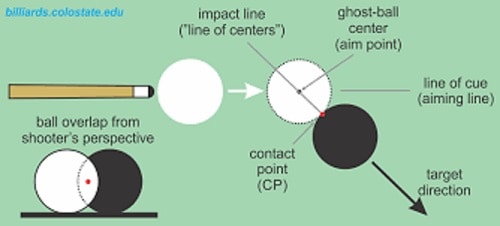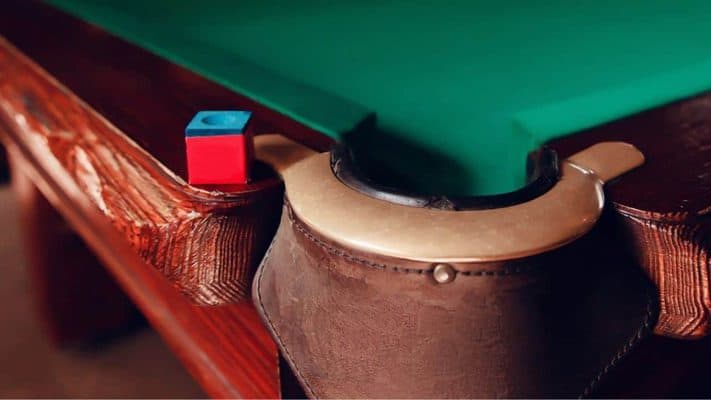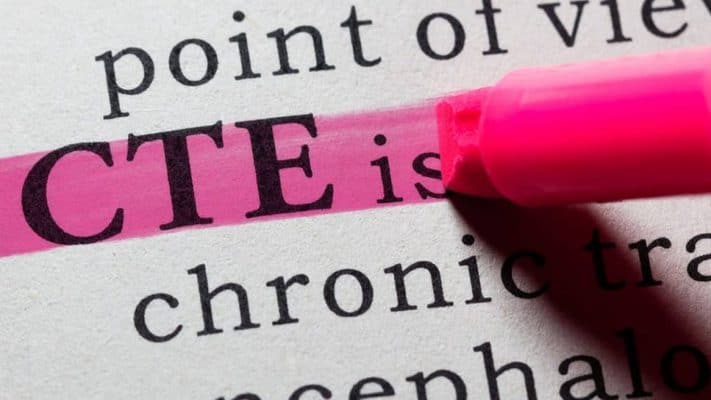There are many aiming systems out the in the pool world some are good and others not so much. Some players and coaches can get very defensive about their chosen aiming system.
Some players don’t use systems and some don’t dont even aim!
But for those of you that need a little help sometimes I’m going to talk about the ghost ball aiming system.
What is The Ghost Ball Aiming System?
The ghost ball system is so called because you need to imagine a ball in the exact position that your cue ball will be at impact with the object ball on the shot line. You have to imagine or visualize the cue balls’ impact location and so it is given the name “Ghost Ball”.
Some people have a problem “seeing” something that isn’t actually there and forming a picture of it in their imagination. Like all skills it can be learned and with plenty of practice made to become a part of your pre shot routine and subconscious armory for matches.
So How Does It Work In Theory?

If you place a ball in a direct line behind the object ball in line with the pocket you can be said to have placed a ghost ball. In this way, the center of the ghost ball, the center of the object ball and the center of the pocket will be in one line.
Where the center of the ghost ball crosses the line to the pocket will be the aim line from your position. This point will be the same from any position on the table.
This simplifies matters.
You Need A Good Imagination.
The principle of ghost ball aiming is that if you imagine the ghost ball which is in line with the pocket and then replace your cue ball into that exact ghost ball location you will make the object ball into the pocket.
To do this requires a very good imagination and the ability to visualize your cue ball in the place of the object ball at varying distances. Obviously the further away the object ball is the smaller it will appear to you in your vision.
Some Of The Downfalls Of Ghost Ball Aiming.
- All shots thinner than 1/2 ball contact will have the aim point in space and not adjacent to the object ball.
- The line through the object ball to the ghost ball and the line from the cue ball to the ghost ball will intersect 9/16 an inch from the back of the object ball.
- This distance is also approximately equal to the width of a standard cube of chalk.
- It can be very difficult to perceive this point when looking down the shot line as the 9/16 inch intersection it’s not so easy to see when you have a fuller cue ball contact.
- The further apart the balls the harder it is to visualize.
Cut Induced Throw (CIT) Thickens The Contact.
Although contact at this point will be in direct line with the pocket there is the small but important issue with CIT otherwise known as cut induced throw. CIT will momentarily push the object ball in the direction of the cue ball travel in what appears to be a thicker contact than previously estimated. This needs to be allowed for when aiming either by:
- Aiming for a thinner contact.
- .Using outside spin.
CIT varies with speed, spin and cut angle and is worse at slow speeds.
The amount of outside English that needs to be applied to counter the effects of CIT on cut angle also varies.
Should You Use Ghost Ball Aiming?
The ghost Ball aiming method in theory is sound when taking into account CIT. It is also very useful as a tool when show new players the basics of aiming.
I use it occasionally when trying out new shots and it’s really useful in coaching situations. Personally found it awkward to visualize the position of the cue ball prior to striking the shot.
Ghost ball Aiming is not a method that I would recommend for everyone.
But please try it out you might one of the players who loves it.
If you do try it out give it some time to work and let me know how you are doing.



